cPanel allows you to monitor usage statistics and quickly shows you the used disk space and therefore understands if a disk cleanup is needed.
Let’s see how to check the disk usage status and free up space.
Table of Contents
Disk cleanup: how to check disk usage
The first thing to do is check how much free space is available and how much is occupied. Disk space depends on the number and, of course, the size of the account’s files, emails, and database. When you reach the limit, you will not be able to upload any more files to the server.
After doing the login to cPanel, we will find ourselves on the cPanel home page. On the right, we can see a panel with the statistics in which the Disk Usage item appears. Here the used space, the remaining space, and the percentage of used space are indicated.
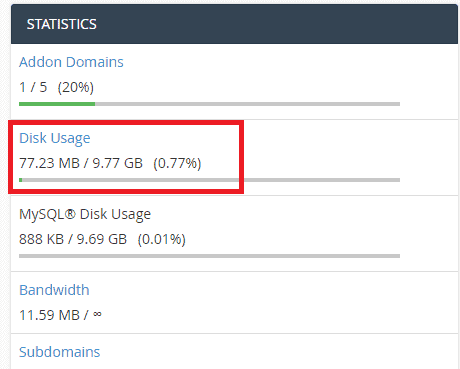
This data gives us a first and quick indication of the amount of space available. By clicking on Disk Usage from the side panel or the File section, we can see additional details.

This page shows us disk usage based on the different folders on the server.
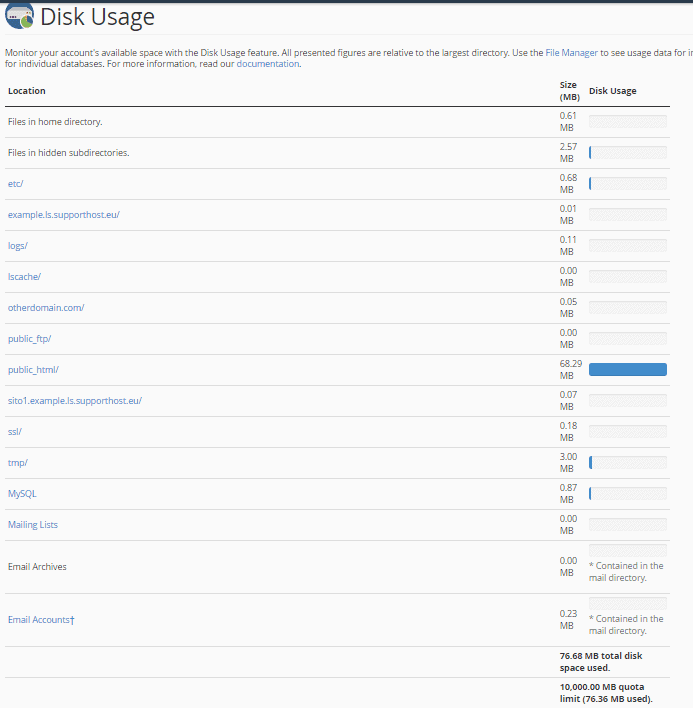
We can also see the amount of space used by the files stored in the mailboxes associated with the account and the quota limit, which is the amount of space we have in total on the server.
Scrolling to the bottom of the page, we can see more accurate informations about the folders that take up the most space on the disk. By selecting Sort directories by -> Disk usage, we can sort them in descending order and see which ones take up the most space.
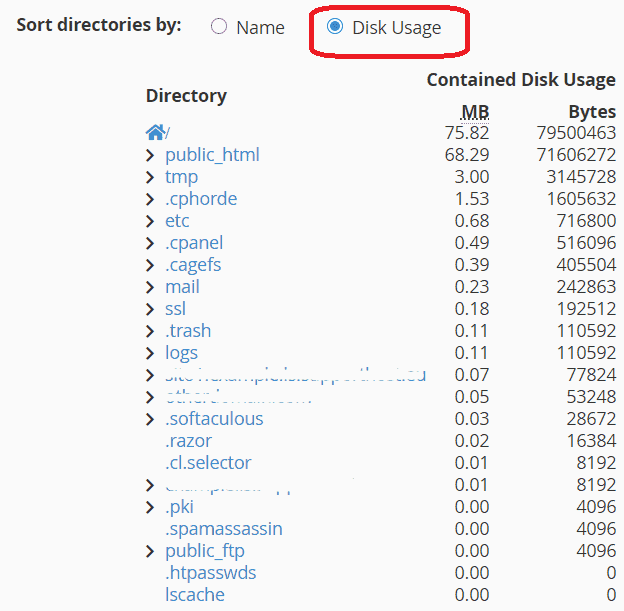
Folders with an arrow in front of their name also contain subfolders. By clicking on each arrow, we will also see the subfolders and the space they use.
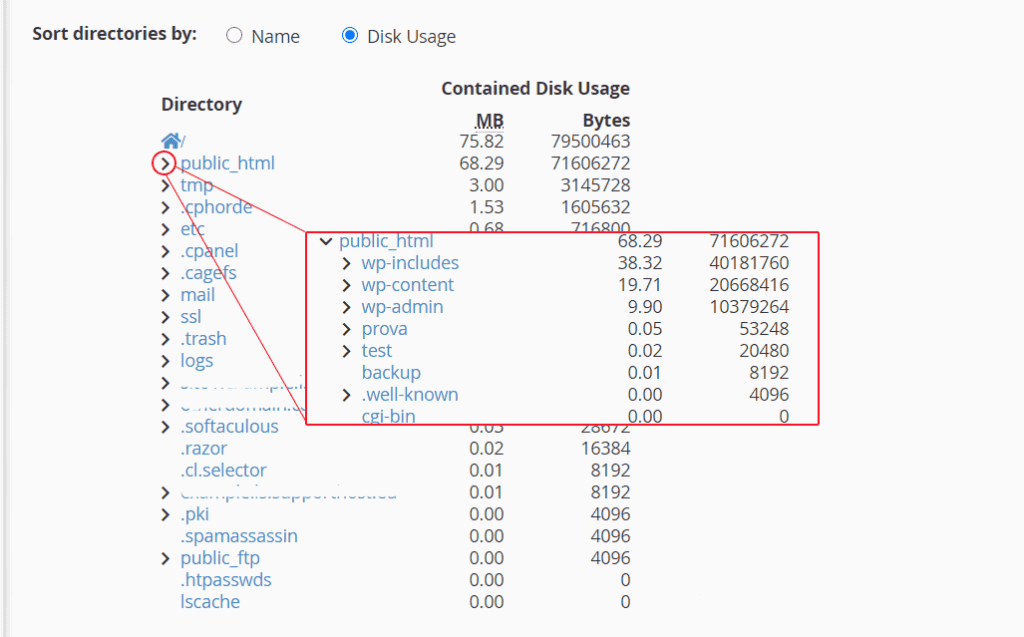
By clicking on one of the folders in the list, we can open it in the cPanel file manager and view its contents. Let’s see how to free up disk space using the file manager.
Free up some disk space
If you are approaching the maximum space limit, you can recover some space by deleting files. To do this, simply log into the cPanel file manager or access your files via FTP. In this case, we will see how to do it from cPanel.
From the files section of cPanel open File Manager.

One way to free up disk space is to delete site backups after downloading them to your computer. Like in this example, I’m showing you where we deleted a backup made directly from cPanel.
To delete a file, click with the right button on it and then click on the Delete item as you see here:
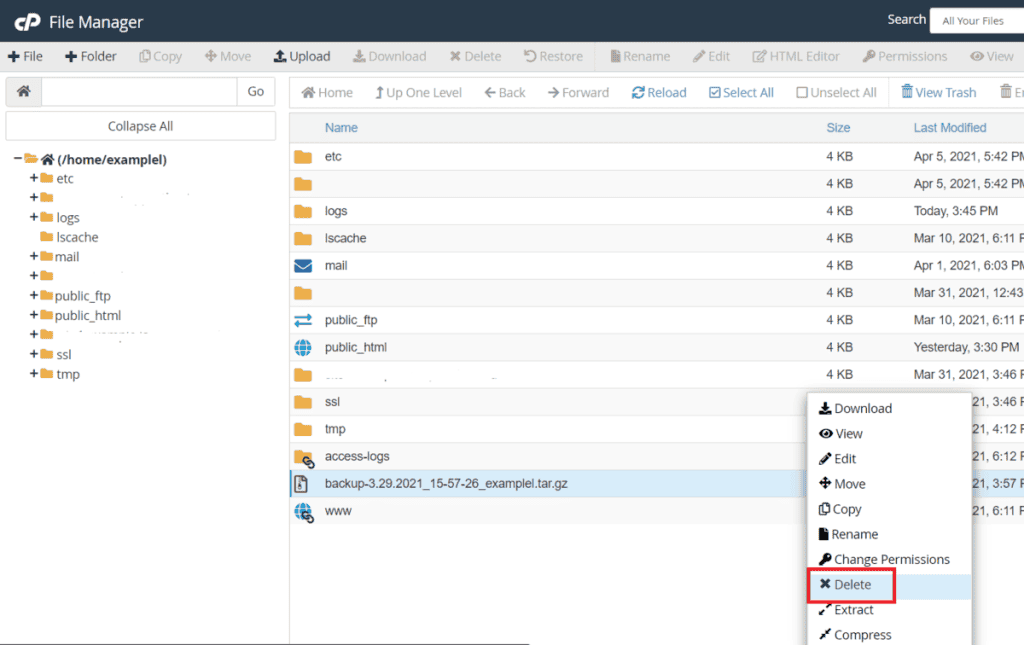
When a note appears, click on Confirm. At this point, we can also check the presence of files in the recycle bin and permanently delete them.
From the file manager, just click on View Trash from the top bar to open it.

From here, click on Empty Trash to lastingly delete the files, then click on Empty Trash to confirm.

Remember that by emptying the trash, you will no longer be able to restore the files you have deleted. In case you need to recover files, you can do it with the restore files from automatic backup.
If you need more space for your website, you can upgrade to a bigger plan.
Disk cleanup: free up space by emptying your mailboxes
You can access the disk usage of the mailboxes from the Email section by clicking on Email Disk Usage.

From here, you can see the space used for each folder: received, sent, drafts, trash, spam, etc.
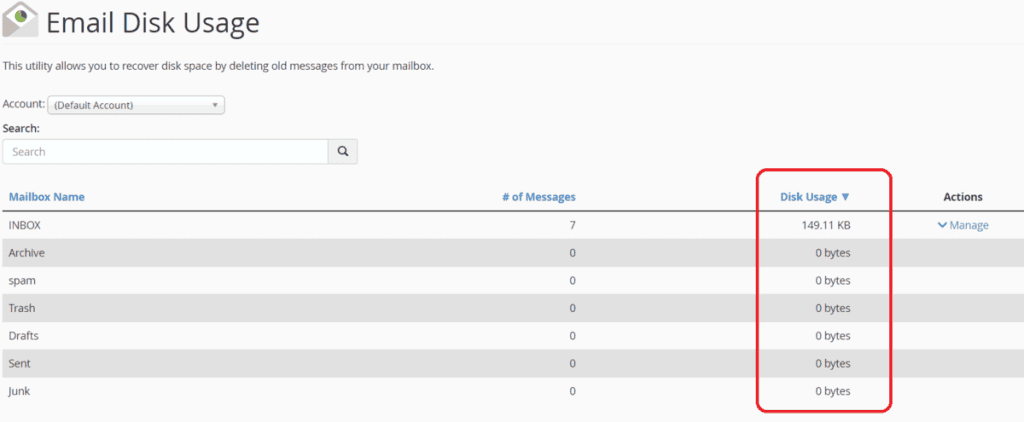
In case you have more than one account, you can change it by clicking on the drop-down menu you see indicated here:
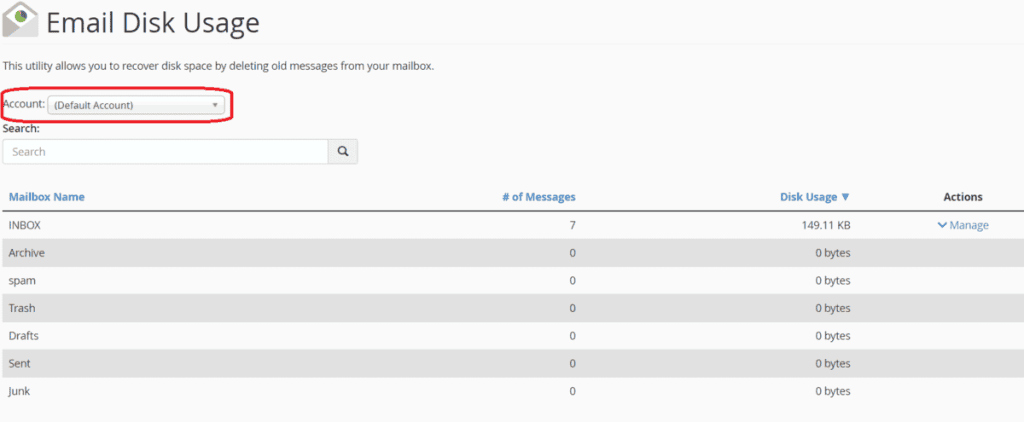
To clean the disk and free up space, from this section you can delete the messages in the various folders. First, click on the Manage button.

At this point, we can choose which messages to delete from the following options:
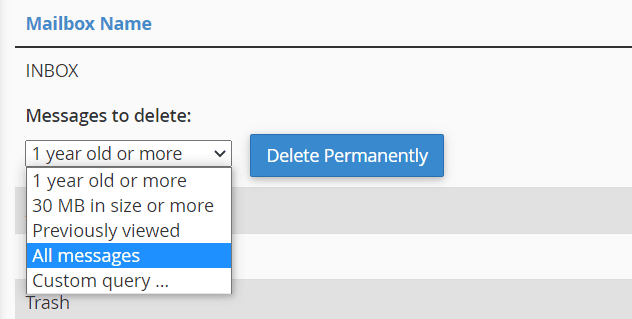
- All messages: delete all messages in the folder
- 1 year old or more: delete emails you have received for at least one year or more
- Previously viewed: delete already read messages
- 30 MB in size or more: delete all emails weighing 30MB and up.
After selecting one of the options, just click on Delete Permanently to delete the emails. Remember that in this case, the deletion is permenent. If you’ve accidentally deleted important emails, you can always restore the email account from one of the automatic backups.

